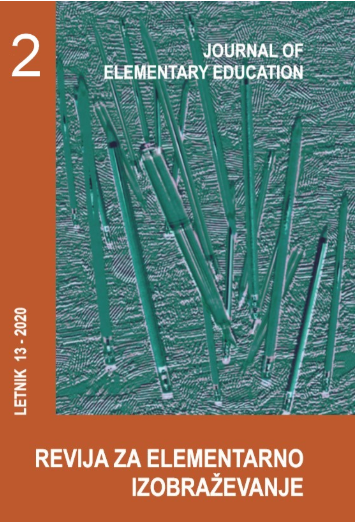Learning Environment Variables and the Efficacy of Student Learning in Secondary School in Abak Local Government, Akwa Ibom State
DOI:
https://doi.org/10.18690/rei.13.2.113-130.2020Povzetek
Spremenljivke učnega okolja in učinkovitost učenja srednješolcev v lokalni skupnosti Abak, država Akwa. Za usmerjanje raziskave smo oblikovali štiri ničelne hipoteze. Iz vsake od 6 šol smo s tehniko enostavnega naključnega vzorčenja izbrali po 34 respondentov in tako iz populacije 1518 učencev pridobili vzorec z 204 učenci. Za pridobitev odziva od respondentov je bil uporanljen instrument imenovan LEVSLEQ. Zanesljivost raziskovalnega instrumenta je dala koeficient 0,82. Podatke smo analizirali z uporabo t-testa za odvisne vzorce in preizkusili na ravni značilnosti v višini 0,05. Ugotovitve so pokazale, da okoljske spremenljivke vplivajo na učno učinkovitost učencev.
Prenosi
Literatura
Anderson, J. R. (1993). Problem Solving and Learning. American Psychologist, 48(1), 35–44
Asuquo, B. B. (2006). Impact of Classroom Climate on Students’ Critical Thinking among Senior Secondary School Students in Uyo Metropolis. An unpublished (B. Ed.) Seminar, University of Uyo, Uyo Akwa Ibom State.
Bandele, S. O. (2002). Administration of Continuous Assessment in Tertiary Institution in Nigeria. Journal of Educational Foundations and Management, 1 (1): 289–296.
Clifford, M. M (1972). Effects of Competition as a Motivational Techniques in the Classroom. American educational Research Journal 9 (1), 123-137
Cotton, K. (2001). New Small Learning Communities: Findings from recent literature. Northwest Regional Education laboratory.
Denga, D. I. (2002). Guidance and Counselling in Schools and Non-school Settings. Calabar: Rapid Educational Publisher.
Essien, E. I. (2009). Efficacy of learning Environment and learners’ Demonstration. Learning in Urban Local Education Committee. An Unpublished (B.Ed.) Project, Faculty of Education, University of Uyo, Uyo, Akwa Ibom State.
Fraser, B. J (2002). Classroom Learning Environment: Retrospect, Context and prospect. Second International Handbook of Science Education, 1191-1239
Freiberg, H. J (1999). School Climate: Measuring, Improving and Sustaining Healthy Learning Environments: Philadelphia, PA: Falmer Press
Lawal, F. (2003). Students Reference Book on Learning and Remembering Techniques. Lagos: Scholastic and Allied Production Ltd.
Clifford, M. M (1972). Effects of Competition as a Motivational Techniques in the Classroom. American educational Research Journal 9 (1), 123-137
John, H. F, Miller, P. H and Miller, S. A (1985). Cognitive Development. Prentice-Hall
Ogunlade, J. C. (2006). Learning Environment and Educational Attainment in some school children in western Nigeria. Journal of Education, 7, 1–17.
Okon, J. I. (2003). School Location: A correlation of students’ reading Attention span. In Calabar south locality. Unpublished (B.Ed.). Project, Faculty of Education, University of Calabar.
Salvin, R. E (1994). Educational psychology: Theory and Practice (London, Aliyn and Bacon).
Sunday, A. T. (2008). Impacts of structured Learning Environment on students’ study habits in Mbo Local Government Area. Unpublished NCE, Seminar, Akwa Ibom State College of Education, Afaha Nsit.
Prenosi
Objavljeno
Številka
Rubrika
Licenca
Avtorske pravice (c) 2020 Abisola Oladeni Sakirudeen, Ekanem Uwe

To delo je licencirano pod Creative Commons Priznanje avtorstva 4.0 mednarodno licenco.
